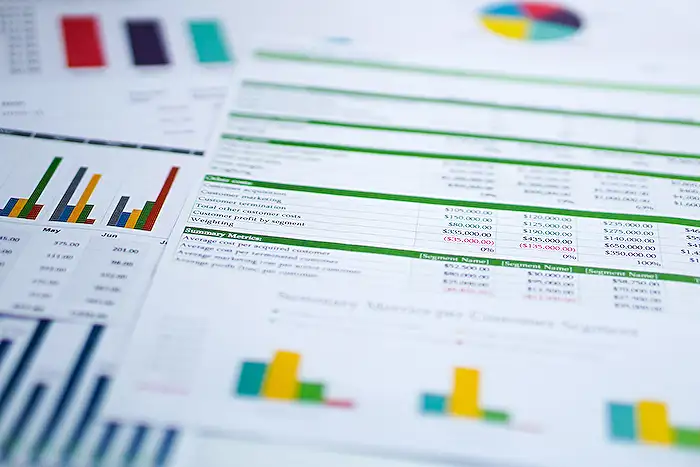Excel become a Data Analysis Essentials Fast in 2025
Excel, Pivot Tables, TRIM, PROPER, Charts, Power BI
Key insights
- Data Analysis Steps in Excel: The tutorial covers four core steps: cleaning data, transforming it, analyzing with Pivot Tables and functions, and visualizing with charts and pivot table slicers.
- Essential Excel Functions: Key functions include SUM, AVERAGE, COUNT for arithmetic operations; IF Statements for conditional evaluations; and VLOOKUP/HLOOKUP for data retrieval.
- Data Cleaning Techniques: Methods such as removing duplicates, using Text to Columns, and applying Data Validation are essential for maintaining data integrity.
- Advanced Analytical Tools: PivotTables allow dynamic summarization of datasets. Advanced formulas like INDEX and MATCH offer flexible data retrieval options.
- Visualization Skills: Creating charts and graphs helps visualize trends and patterns, improving understanding and communication of insights.
- Career Development Courses: Various courses are available covering Excel for Business & Finance, Power BI for analytics, SQL for database management, VBA & Macros for automation, and Python for data analysis.
Mastering Data Analysis in Excel: A Comprehensive Guide
In a fast-paced digital world, data analysis has become a crucial skill for professionals across various fields. Kenji Farré, known as Kenji Explains and a Microsoft MVP, offers an insightful YouTube tutorial that aims to equip viewers with essential data analysis skills using Excel. The video, titled "Learn 80% of Data Analysis Essentials in Excel in Just 12 Minutes," provides a step-by-step guide on how to clean, transform, analyze, and visualize data using a real-world Olympics dataset. This article delves into the key aspects of Kenji's tutorial, exploring the challenges and tradeoffs involved in each step.
Data Cleaning: Laying the Foundation
The first step in Kenji's tutorial is data cleaning, which serves as the foundation for any successful data analysis project. Data cleaning involves creating a backup of the raw dataset, removing duplicates, and ensuring data integrity. Kenji emphasizes the importance of this step, as it sets the stage for accurate analysis and reliable results.
However, data cleaning can be a time-consuming process, especially when dealing with large datasets. The challenge lies in balancing thoroughness with efficiency. While it's crucial to eliminate errors and inconsistencies, spending too much time on cleaning can delay the overall analysis. Kenji suggests using Excel's built-in tools, such as the "Remove Duplicates" feature, to streamline the process. Additionally, functions like TRIM and PROPER help in standardizing text data, making it easier to work with.
Transforming Data: Preparing for Analysis
Once the data is cleaned, the next step is transformation. This involves replacing certain values, filling in blanks, and organizing the data to make it suitable for analysis. Kenji demonstrates how to use Excel functions to achieve these tasks efficiently. For instance, the IF function allows users to perform conditional evaluations, while VLOOKUP and HLOOKUP facilitate data retrieval from large datasets.
Transforming data requires a keen understanding of the dataset and the specific analysis goals. One of the main challenges is deciding which transformations are necessary and how they will impact the final analysis. Kenji advises viewers to keep the end goal in mind and ensure that the transformed data aligns with the questions they aim to answer.
Analyzing Data: Extracting Insights
The core of Kenji's tutorial lies in the analysis phase, where he uses Pivot Tables and Excel functions to extract meaningful insights from the dataset. Pivot Tables enable dynamic summarization and filtering, allowing users to explore different aspects of the data quickly. Kenji highlights the importance of asking the right questions during this phase, as it guides the analysis and ensures relevant insights are uncovered.
While Pivot Tables are powerful tools, they come with their own set of challenges. Users must be familiar with the dataset's structure and the relationships between different data points. Moreover, the sheer volume of data can be overwhelming, making it difficult to identify patterns and trends. Kenji suggests breaking down the analysis into smaller, manageable parts and using Excel's advanced formulas, such as INDEX and MATCH, for more flexible data retrieval.
Visualizing Data: Communicating Findings
The final step in Kenji's tutorial is data visualization, which involves creating charts and using Pivot Table slicers to present the findings clearly and effectively. Visualization is a critical aspect of data analysis, as it helps communicate complex insights in an easily digestible format. Kenji demonstrates how to create various types of charts in Excel, emphasizing the importance of choosing the right visualization for the data.
One of the main challenges in data visualization is ensuring that the visuals accurately represent the data and convey the intended message. Kenji advises viewers to adhere to best practices in data visualization, such as using appropriate color schemes and avoiding cluttered charts. Additionally, he highlights the role of storytelling in data visualization, encouraging users to craft a narrative that guides the audience through the insights.
Conclusion: Enhancing Data Analysis Skills with Excel
Kenji Farré's YouTube tutorial offers a comprehensive overview of the essential steps in data analysis using Excel. By focusing on data cleaning, transformation, analysis, and visualization, viewers can develop a solid foundation in data analysis skills. However, it's important to recognize the tradeoffs and challenges associated with each step, as they can impact the overall effectiveness of the analysis.
Excel remains a powerful tool for data analysis, offering a range of functions and features that enable users to manage, analyze, and visualize data efficiently. By mastering these functionalities, professionals can make informed decisions and communicate insights effectively. As Kenji's tutorial demonstrates, with the right approach and tools, anyone can enhance their data analysis skills and unlock the full potential of their data.
For those interested in further developing their data analysis skills, Kenji's tutorial is a valuable resource, providing practical insights and techniques that can be applied in various professional contexts.

Keywords
Data Analysis, Excel Essentials, Learn Data Analysis, Quick Excel Tutorial, 12-Minute Excel Guide, Master Data Analysis, Excel for Beginners, Efficient Data Skills
